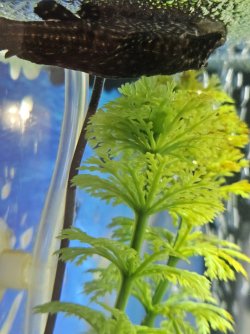TheDudeAbides818
New Member
For the past day or so, my Pleco has been at the surface, belly up A LOT. I’ve been reading online about what this can be (swim bladder issues, oxygen deficiency), but I’m asking here to see if anyone has had this problem before and what can be done about it. Clearly he’s not well in some way. I’ve tested my water numerous times with two different brand test strips and am not seeing anything out of the ordinary.


